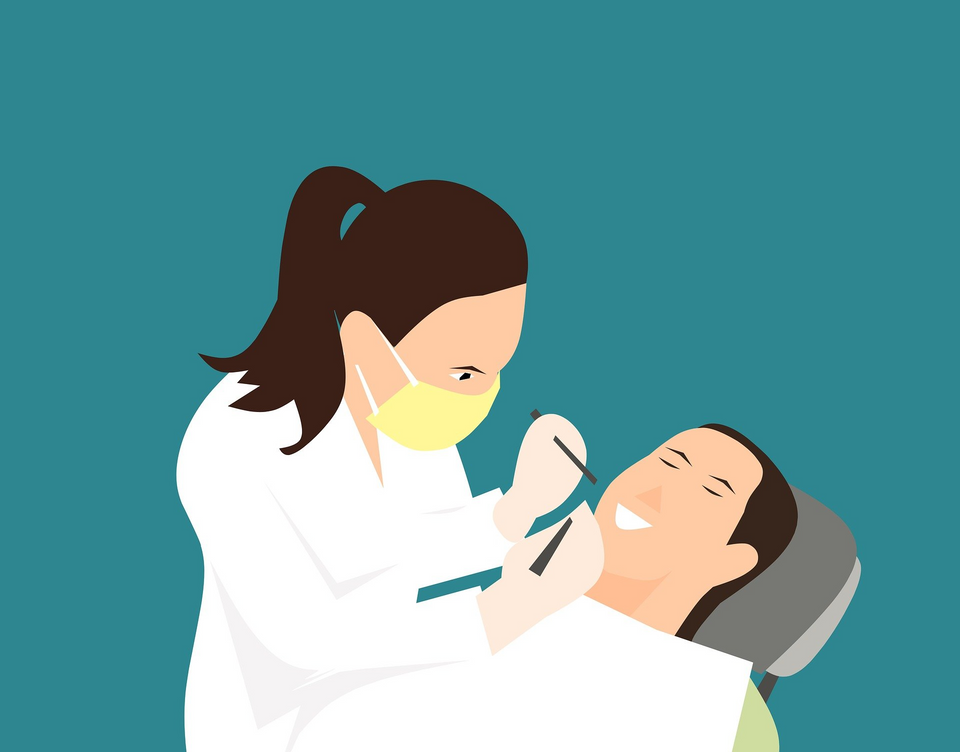Why Dental Teeth Cleaning Every 6 Months Is Necessary

How often do you visit the dentist? Even if you brush and floss daily and don’t have pain, a problem or a cavity, you should get regular cleanings. Getting your teeth cleaned and polished not only gives you a great smile, but it also prevents future decay and gum disease.
It’s a Checkup for Your Teeth
Getting your teeth cleaned every six months gives your dental team a chance to examine your oral health. They’ll use a mirror to evaluate your teeth and gums. The hygienist will look for signs of gingivitis, including inflammation, bleeding and tenderness.
Gum disease is the primary cause of tooth loss. Having your gums assessed every six months can help you keep your teeth as you get older.
The hygienist will also look for other issues. They’ll inspect your mouth for lesions and look for faulty fillings. They will consult with the dentist if they notice anything out of the ordinary. Having this type of checkup every six months allows your dental professionals to get to know you and monitor any changes.
Regular Cleanings Remove Plaque and Tartar
One of the aspects of a dental cleaning that takes the most time is the plaque removal process. The hygienist uses a tool called a scaler to scrape the plaque off of your teeth. Even if you are fanatical about flossing, you might have trouble accessing hard-to-reach areas. The hygienist can get into tight spots between the teeth and toward the back of the mouth.
But plaque isn’t the only buildup that can develop on your teeth. Tartar develops when plaque is not completely removed.
Plaque is a film that is always growing on your teeth. It’s colorless, but it’s sticky. It can accumulate on any tooth surface but is particularly prevalent around the gum line. Plaque is colorless, and you probably won’t notice that it’s there.
However, it contains bacteria that can lead to cavities, gingivitis and other dental conditions. You might notice the symptoms of tooth problems without realizing that you have plaque.
If you have a diligent dental hygiene regimen at home, you might not have a problem with plaque. But you might not be able to remove all of it on your own.
When plaque remains on the teeth, it combines with your saliva to harden into tartar, or calculus. Tartar is much harder than plaque. It’s also yellow or brownish. Tartar can make you lose your teeth or develop a receding gum line. It also contributes to decay and gum disease.
You can’t remove tartar at home. A professional cleaning is the only way to get rid of the unsightly tartar that can weaken your oral health.
Your Teeth Will Be Polished
After using the scaler, the hygienist or dentist will clean your teeth. This is usually done with a gritty toothpaste and a rotating polishing tool. The toothpaste is mildly abrasive and removes any plaque and tartar that the scaler may have left behind.
Although it’s safe to use a grainy product like this twice a year, you shouldn’t be this rough on your teeth at home. The dental team has experience with using products such as these and understands how to use them properly.
You’ll Get a Good Flossing
After scraping and polishing your teeth, your dental professional will floss them to remove debris and toothpaste that they might have left behind. An expert flossing is a great reminder to continue the practice at home.
When the professionals floss your teeth, they can locate any tight spots that might give you trouble when you floss on your own. They’ll notice whether your gums are prone to bleeding in certain areas. They may also give you some tips for achieving the best oral health.
What Else Happens During a Cleaning?
When you go to your cleaning, you may be offered X-rays or fluoride treatments. You don’t usually need these every six months, though.
Topical fluoride can strengthen tooth enamel and prevent decay. People with frequent cavities, gum disease, dry mouth, crowns or bridges may benefit from fluoride treatments. Dentists don’t always recommend fluoride treatments for adults, but they may if you are prone to cavities or have other issues.
Depending on your dental history, you may receive X-rays at your cleaning. Some patients only get X-rays every few years. People who are not at risk of decay may only need X-rays every 24 to 36 months. Others, such as those with recent gum disease or tooth pain, may opt to have imaging every six months.
A cleaning is also a great time to ask your dentist questions. If cavities crop up every time you visit the dentist, you may want to find out why you’re prone to them.
You can ask your dentist to show you how to brush your teeth properly so that you don’t miss any important areas. You might also ask for a flossing tutorial to make sure that you’re doing it correctly. Even though most adults think that they know how to brush their teeth, you could be missing spots without knowing it.
Some of the best questions to ask your dentist at a cleaning include:
• How can I whiten my teeth?
• Do I have gum disease?
• Does my oral hygiene routine seem effective?
• Would I benefit from using a mouthwash?
• Do you notice signs that I’m grinding my teeth?
You might also want to point out any sensitive spots on your teeth or in your mouth.
Visiting your dentist every six months gives you a chance to do more than talk about the weather. It’s an essential part of your health care routine.

